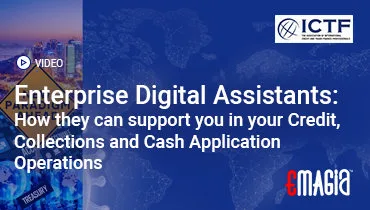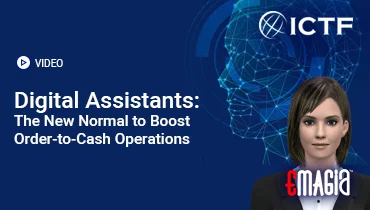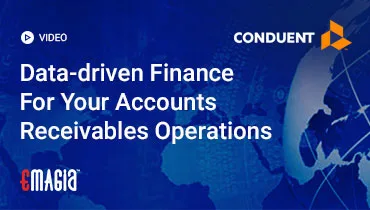In the intricate world of business finance, the journey from making a sale to receiving payment is often complex and fraught with potential inefficiencies. This critical financial lifecycle, known as the invoice-to-cash process, directly impacts a company’s liquidity, profitability, and overall financial health. While every business strives to get paid quickly, traditional, siloed approaches to invoicing, collections, and cash application can create significant bottlenecks, eroding valuable capital and delaying revenue recognition.
This is where integrated invoice-to-cash applications emerge as a transformative solution. By unifying disparate financial operations into a single, cohesive system, these applications promise not just efficiency gains but a tangible return on investment (ROI) that can reshape a company’s financial future. This comprehensive guide will delve into the profound ROI of using integrated invoice-to-cash applications, exploring how they streamline the entire cycle, accelerate cash flow, reduce operational costs, and ultimately unlock superior financial performance for modern enterprises.
Understanding the Invoice-to-Cash Process: The Lifeblood of Revenue
What is Invoice-to-Cash? Defining the Financial Cycle
At its core, what is invoice to cash? It is the complete financial process that begins when a company issues an invoice to a customer and concludes when the payment for that invoice is successfully received and applied to the customer’s account. This cycle is fundamental to converting sales into actual revenue and maintaining healthy cash flow. It encompasses several interconnected stages, each crucial for the efficient movement of funds.
The invoice to cash meaning signifies this entire journey of a receivable , from its creation to its final settlement. It’s not just about sending a bill; it’s about managing the entire relationship and process to ensure timely collection.
Invoice-to-Cash Process Flow: Key Stages Explained
The typical invoice to cash process flow involves several distinct, yet interdependent, stages. It usually begins with credit management and order fulfillment, leading to invoicing. Once an invoice is sent, the focus shifts to collections, where follow-ups and reminders are managed. Subsequently, payments are received and applied in cash application. Finally, dispute resolution handles any issues that arise, and reporting provides insights across the entire cycle.
Each stage presents opportunities for optimization or, conversely, for bottlenecks if not managed efficiently. Understanding this flow is vital for identifying areas where integrated invoice-to-cash applications can bring the most value and ultimately improve the invoice to cash cycle.
Invoice-to-Cash Cycle vs. Order-to-Cash Cycle: A Clarification
While often used interchangeably, it’s important to differentiate between the invoice to cash cycle and the order to cash vs invoice to cash concept. The invoice to cash cycle specifically focuses on the post-sales activities: invoicing, collections, and cash application. It begins once the order has been fulfilled and the invoice is generated.
The order to cash cycle is a broader term that encompasses the entire customer journey, starting from the initial sales order, through order fulfillment, invoicing, collections, and cash application. So, the invoice to cash process is a critical subset of the larger order-to-cash process. Both are vital for revenue realization, but invoice to cash zeroes in on the financial aspect of payment collection.
Challenges in Traditional Invoice-to-Cash Processes: Why Integration is Needed
Traditional invoice to cash processes are often plagued by manual tasks, siloed data, and a lack of communication between departments. This can lead to significant challenges: delayed invoicing, inconsistent collection efforts, errors in cash application (e.g., how to fix cash receipt applied to incorrect invoice), and prolonged dispute resolution times. These inefficiencies directly impact cash flow and increase operational costs.
Many businesses still rely on disparate systems for different stages of the cycle, leading to data fragmentation and a lack of real-time visibility. This fragmented approach underscores the pressing need for integrated invoice-to-cash applications to overcome these hurdles and unlock true efficiency.
Integrated Invoice-to-Cash Applications: The Modern Solution
What are Integrated Invoice-to-Cash Applications? A Unified Approach
Integrated invoice-to-cash applications are comprehensive software solutions that unify and automate all stages of the invoice to cash process. Instead of using separate tools for invoicing, collections, and cash application, these applications bring everything under one roof. This creates a seamless, end-to-end workflow that eliminates manual handoffs and data silos.
These applications leverage advanced technologies like automation, artificial intelligence, and machine learning to streamline operations, improve accuracy, and provide real-time insights. They represent a significant leap forward from traditional, fragmented approaches to financial operations, offering a holistic solution for the entire invoice to cash cycle.
How Integrated Software Transforms the Invoice-to-Cash Process
Integrated invoice-to-cash applications fundamentally transform the way businesses manage their receivables. By providing a single platform, they enable seamless data flow between credit, billing, collections, and cash application teams. This improves communication, reduces processing times, and minimizes errors. For example, a credit hold can automatically trigger a pause in invoicing, or a payment receipt can instantly update a customer’s account, preventing unnecessary collection calls.
This integration leads to a more efficient and transparent invoice to cash process flow, accelerating cash conversion and reducing operational overhead. It’s about creating a cohesive financial ecosystem where every step of the payment journey is optimized for speed and accuracy.
Invoice-to-Cash Automation: Key Capabilities and Benefits
At the heart of integrated invoice-to-cash applications lies robust invoice to cash automation. Key capabilities include automated invoice generation and delivery, rule-based dunning (automated payment reminders), intelligent cash application that matches payments to invoices instantly, and automated dispute routing. These automations significantly reduce manual effort and accelerate the entire cycle.
The benefits of invoice to cash automation are immense: lower operating costs, reduced human error, faster cash application, and improved Days Sales Outstanding (DSO). It allows finance teams to shift their focus from repetitive tasks to more strategic activities like analyzing trends and managing exceptions, directly contributing to the ROI of using integrated invoice-to-cash applications.
Calculating the ROI of Integrated Invoice-to-Cash Applications: Quantifying the Value
Why Measure ROI? Justifying Investment in Financial Technology
Measuring the ROI of using integrated invoice-to-cash applications is crucial for justifying the investment in new financial technology. Businesses need to understand the tangible benefits and financial returns that these systems can deliver. A clear ROI calculation helps secure budget approval, demonstrates value to stakeholders, and ensures that the technology investment aligns with strategic financial goals.
Without a robust ROI analysis, it’s difficult to assess the true impact of the solution on profitability and operational efficiency. It provides the necessary data to prove that the expenditure on invoice to cash software is a sound financial decision.
Key Metrics for ROI Calculation: DSO, Operational Costs, and Bad Debt
To calculate the ROI of using integrated invoice-to-cash applications, several key metrics are essential. These include:
- Days Sales Outstanding (DSO): A reduction in DSO directly translates to faster cash conversion.
- Operational Costs: Savings from reduced manual labor, paper, postage, and error correction.
- Bad Debt/Write-offs: Lower rates due to proactive collections and better credit risk management.
- Dispute Resolution Time: Faster resolution frees up cash and resources.
- Cash Application Accuracy: Reduced errors mean less time spent on reconciliation (e.g., preventing issues like how to fix cash receipt applied to incorrect invoice).
By tracking these metrics before and after implementation, businesses can quantify the financial gains. These improvements directly contribute to the overall invoice to cash collection efficiency.
Quantifiable Benefits Driving ROI: Cost Savings and Faster Cash Flow
The quantifiable benefits of integrated invoice-to-cash applications are substantial. Businesses can expect significant cost savings from reduced manual processing, fewer errors, and decreased reliance on paper-based systems. Automation minimizes the need for extensive human intervention in tasks like invoice generation, sending reminders, and applying payments.
More importantly, these applications lead to dramatically faster cash flow. By accelerating the entire invoice to cash cycle, companies convert receivables into cash more quickly, improving liquidity and reducing the need for short-term borrowing. This direct impact on working capital is a primary driver of ROI.
Non-Quantifiable Benefits: Customer Satisfaction and Strategic Focus
Beyond the measurable financial gains, integrated invoice-to-cash applications also deliver significant non-quantifiable benefits. These include:
- Improved Customer Satisfaction: Faster, accurate invoicing and a streamlined payment experience lead to happier customers.
- Enhanced Compliance: Automated audit trails and standardized processes ensure adherence to financial regulations.
- Better Employee Morale: Finance teams are freed from tedious, repetitive tasks, allowing them to focus on more engaging and strategic work.
- Strategic Focus: Management gains real-time insights into financial performance, enabling more informed strategic decisions.
While harder to put a dollar value on, these benefits contribute significantly to long-term business success and competitiveness.
Key Benefits Driving ROI: Accelerating the Invoice-to-Cash Cycle
Accelerated Invoice-to-Cash Collection: Reducing Days Sales Outstanding (DSO)
One of the most immediate and impactful benefits driving the ROI of using integrated invoice-to-cash applications is the accelerated invoice to cash collection. By automating invoicing, sending timely reminders, and streamlining dispute resolution, these applications significantly reduce Days Sales Outstanding (DSO). A lower DSO means cash is collected faster, improving working capital and liquidity.
This acceleration directly translates into financial gains, as money that would otherwise be tied up in receivables becomes available for investment, debt repayment, or operational needs. It’s a fundamental improvement to the entire invoice to cash cycle.
Enhanced Efficiency in the Invoice-to-Cash Process Flow
Integrated invoice-to-cash applications bring about a profound enhanced efficiency in the invoice to cash process flow. By automating manual tasks and eliminating data silos, the entire workflow becomes smoother and faster. This means less time spent on administrative duties and more time focused on strategic financial management.
From automated credit checks to intelligent cash application, every step is optimized for speed and accuracy, reducing bottlenecks and improving overall operational productivity. This efficiency gain is a direct contributor to the positive ROI.
Improved Accuracy and Reduced Errors: Minimizing Financial Leakage
The automation inherent in integrated invoice-to-cash applications leads to significantly improved accuracy and reduced errors. Manual data entry is a common source of mistakes, which can lead to delayed payments, disputes, and reconciliation headaches. For instance, issues like how to fix cash receipt applied to incorrect invoice become less frequent with automated matching.
By minimizing human intervention and leveraging AI for tasks like cash application, these systems ensure that invoices are correct, payments are accurately matched, and financial records are pristine. This reduction in errors prevents financial leakage and saves valuable time spent on corrections, further boosting ROI.
Better Customer Experience in B2B Invoice-to-Cash: Fostering Relationships
For businesses, particularly in the B2B space, integrated invoice-to-cash applications contribute to a better customer experience in invoice to cash b2b environments. Clear, timely, and accurate invoices, coupled with easy-to-use payment portals and proactive communication, create a positive payment experience for customers.
This fosters stronger relationships, encourages timely payments, and can even lead to repeat business. A smooth payment process reduces customer frustration and enhances overall satisfaction, which, while not always directly quantifiable, is invaluable for long-term business success and indirectly impacts revenue.
Strategic Insights from Integrated Data: Informed Decision-Making
One of the most powerful benefits of integrated invoice-to-cash applications is the ability to generate strategic insights from integrated data. By unifying data from all stages of the cycle, these applications provide comprehensive dashboards and real-time analytics. This allows finance leaders to monitor KPIs, identify trends, and make informed decisions about credit policies, collection strategies, and overall cash management.
This data-driven approach moves finance teams from reactive problem-solving to proactive strategic planning, enabling them to optimize financial performance and contribute more effectively to the company’s growth objectives. The insights derived directly enhance the ROI of using integrated invoice-to-cash applications.
Implementing Integrated Invoice-to-Cash Applications: Key Considerations
Choosing the Right Invoice-to-Cash Software: A Strategic Decision
The success of realizing the ROI of using integrated invoice-to-cash applications hinges on choosing the right invoice to cash software. This strategic decision involves evaluating various vendors, assessing their features, scalability, integration capabilities, and industry reputation. Companies often refer to industry reports, such as the Gartner Magic Quadrant Invoice to Cash, to identify leading solutions and understand market trends.
A thorough needs assessment, vendor demonstrations, and reference checks are crucial steps in selecting a solution that aligns with your business’s specific requirements and long-term financial goals. The right software is an investment that pays dividends.
Integration within SAP Environments: Automating Workflows
For many large enterprises, a key consideration is integration within SAP environments. Businesses often ask how to automate invoice-to-cash workflows within SAP environments. Leading integrated invoice-to-cash applications offer robust connectors and APIs to seamlessly integrate with SAP ERP systems (e.g., SAP S/4HANA, SAP ECC). This ensures that data flows smoothly between the core ERP and the specialized invoice-to-cash solution.
Such integration eliminates manual data entry, reduces reconciliation efforts, and provides a unified view of financial data, maximizing the efficiency and ROI of the combined systems. It’s essential for achieving true end-to-end automation in complex enterprise landscapes.
Considerations for Invoice-to-Cash B2B Implementations
Implementing integrated invoice-to-cash applications in invoice to cash b2b environments comes with specific considerations. B2B transactions often involve higher invoice values, complex payment terms, and longer payment cycles compared to consumer transactions (like how to send an invoice on cash app or how to create an invoice on cash app, which are typically for simpler, smaller payments). Therefore, the chosen solution must support robust credit management, sophisticated dispute resolution, and flexible payment options tailored for business clients.
Emphasis should be placed on features that enhance collaboration between sales, finance, and customers, ensuring transparency and efficient problem-solving. The ability to handle diverse payment methods and integrate with various buyer portals is also crucial for B2B success.
Emagia: Maximizing Your ROI with Intelligent Invoice-to-Cash Automation
In the pursuit of superior financial performance, the ROI of using integrated invoice-to-cash applications is a metric that Emagia is dedicated to maximizing for every client. We understand that the journey from invoice issuance to cash receipt is a critical determinant of your company’s liquidity and profitability. Emagia’s AI-powered platform transcends traditional invoice to cash software, delivering a comprehensive, intelligent solution engineered to unlock unprecedented efficiencies and tangible financial returns across your entire revenue cycle.
Emagia revolutionizes every stage of your invoice to cash process with advanced automation. From intelligent invoice presentment and automated dunning sequences that ensure timely follow-ups, to touchless cash application that leverages AI for instant payment matching, our system minimizes manual effort and eliminates costly errors. This seamless automation directly translates into reduced operational costs, a significant acceleration of your invoice to cash cycle, and a dramatic improvement in Days Sales Outstanding (DSO), all contributing directly to your ROI.
Beyond automation, Emagia’s predictive AI provides unparalleled insights into customer payment behavior and potential risks. Our system can forecast delinquencies, allowing your teams to proactively engage with at-risk accounts, optimize collection strategies, and significantly reduce bad debt write-offs. This foresight transforms your invoice to cash collection from a reactive chore into a strategic, value-driving function, directly impacting your bottom line and enhancing your financial health.
Furthermore, Emagia offers seamless integration capabilities, including robust solutions for how to automate invoice-to-cash workflows within SAP environments and other leading ERPs. This ensures a unified view of your financial data, fostering cross-functional collaboration and enabling data-driven decision-making. By choosing Emagia, you’re not just implementing an application; you’re investing in a strategic partnership that delivers continuous innovation and measurable ROI, positioning your business for sustainable growth and financial leadership in the digital age.
FAQs about Invoice-to-Cash Applications and ROI
What is the invoice-to-cash process?
The invoice-to-cash process is the complete financial cycle from when a company issues an invoice to a customer until the payment is received, applied, and reconciled. It encompasses invoicing, collections, cash application, and dispute resolution.
How do integrated invoice-to-cash applications improve ROI?
Integrated invoice-to-cash applications improve ROI by accelerating cash flow (reducing DSO), cutting operational costs (through automation), minimizing bad debt, enhancing accuracy, and providing strategic insights. These benefits lead to a measurable financial return on investment.
What are the key benefits of invoice-to-cash automation?
Key benefits of invoice-to-cash automation include increased efficiency, faster cash application, reduced manual errors, improved Days Sales Outstanding (DSO), lower operational costs, and better overall financial control and visibility.
Is invoice-to-cash the same as order-to-cash?
No, invoice-to-cash is a subset of order-to-cash. Order-to-cash covers the entire customer journey from sales order to cash receipt, while invoice-to-cash focuses specifically on the post-sales financial activities: invoicing, collections, and cash application.
How can I measure the ROI of invoice-to-cash software?
You can measure the ROI of invoice-to-cash software by tracking key metrics before and after implementation, such as Days Sales Outstanding (DSO) reduction, operational cost savings (e.g., reduced labor, paper), reduction in bad debt, and improvements in cash application accuracy and dispute resolution times.
What are the challenges of traditional invoice-to-cash processes?
Challenges of traditional invoice-to-cash processes include manual tasks, siloed data, delayed invoicing, inconsistent collection efforts, errors in cash application, and prolonged dispute resolution times, all of which can negatively impact cash flow and increase costs.
Why is integration with SAP environments important for invoice-to-cash?
Integration with SAP environments is crucial because it ensures seamless data flow between the invoice-to-cash application and the core ERP system. This eliminates manual data entry, reduces reconciliation efforts, and provides a unified, real-time view of financial data, maximizing efficiency and ROI.



